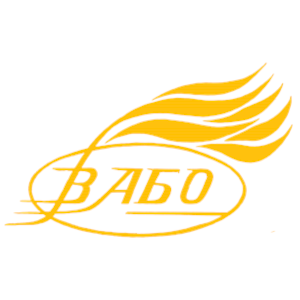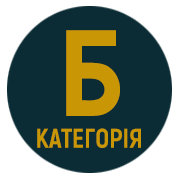PROFESSIONAL BURNOUT OF MILITARY PERSONNEL: FOREIGN EXPERIENCE
DOI:
https://doi.org/10.32782/academ-ped.psyh-2024-2.07Keywords:
burnout, military personnel, partner countries, mental healthAbstract
Over the past decade, the issue of professional burnout among military personnel has become extremely relevant. The intense combat operations, frequent rotations, constant threat to life, emotional stress and unstable conditions of service create a favorable basis for the development of burnout syndrome among servisemen. Increased demands on professional skills, leadership qualities, and psychological stability further exacerbate these risks. The purpose of the article is to study the dynamics and analyze the peculiarities of professional burnout the personnel of the of partner countries over the past ten years in order to create effective strategies for preventing and overcoming this syndrome, which will increase the combat capability and professional efficiency of the military personnel of the Ukrainain Armed Forces. The research methodology. Using the methods of scientific cognition (the synthesis, the analysis, the generalization), the relevance of the current study was revealed, which is seen in the importance of diagnosing and the need to implement other approaches, methods and tools for studying the professional burnout of military personnel, which are reliable and valid, taking into account foreign experience. The scientific novelty. The definitions and factors influencing the development of burnout in the military personnel of the Ukrainain Armed Forces and partner countries are highlighted, the prevalence and levels of professional burnout in certain categories are analyzed, the main symptoms that have the greatest negative impact on the performance of their duties and the tools, which used to identify this syndrome. Conclusions. It has been established that professional burnout of military personnel, as a state of extreme physical and mental exhaustion, loss of interest and positive emotions about work, reduced efficiency and productivity, is an insufficiently studied but extremely common phenomenon. The study of foreign experience in defining, reviewing the main symptoms and valid tools for this issue is necessary in today's conditions for develop adapted interventions and preventive strategies to improve the psychological climate and effectively overcome burnout in the Armed Forces of Ukraine.
References
Вержевська Х., Кихтюк О. Психологічні аспекти емоційного вигорання військовослужбовців Збройних Сил України. Scientific Journal «Psychology Travelogs», 2023, Вип. 3. URL: https://www.inforum.in.ua/conferences/21/61/463.
Деренько В., Дмитрів В., Пасічняк Л. Психологічні аспекти професійного вигорання військовослужбовців. Освітні обрії. 2023. Том 57 №2.2. https://doi.org/10.15330/obrii.57.2.2.55-58.
Литвинова А. В., Кожедуб О. В., Синдром емоційного вигорання військовослужбовців учасників бойових дій. Збірник наукових праць Логос. 2021. DOI 10.36074/logos-01.10.2021.v2.14.
Хайрулін О. Професійне вигорання військовослужбовців як предмет психологічного аналізу. Психологія діяльності в особливих умовах. 2014 №.2. C. 98–123.
Ahola K., Honkonen T., Isometsa E., Kalimo R. & Nykyri E. The relationship between job-related burnout and depressive disorders - results from the Finnish Health 2000 Study. J Affect Disord 88. 2005. P. 55–62.
Alessandri G., Perinelli E., De Longis E., Schaufeli W.B., Theodorou A., Borgogni L., et al. Job burnout: The contribution of emotional stability and emotional self‐efficacy beliefs. J Occup Organ Psychol. 2018. 91(4). P. 823–851.
Anushka Chamod Pathirana, Dilshi Nimesha, Shehan Sajinda Palliyaguruge & Zahra Nazreen. Burnout among Army personnel: A Sri Lankan Experience. License. 2023 CC BY 4.0. DOI:10.21203/rs.3.rs-3018462/v1.
Asmaa Amin Abdelaziz Mohammad. Resilience, burnout, and role stress among military personnel. Middle East Current Psychiatry. 2012. 19(2). P. 123–129. DOI:10.1097/01.XME.0000407820.80263.73.
Bakker A.B., Westman M., Schaufeli W.B. Crossover of burnout: An experimental design. Eur J Work Organ Psychol. 2007. 16(2). P. 220–239.
Balandiz H., & Bolu A. Forensic mental health evaluations of military personnel with traumatic life event, in a university hospital in Ankara, Turkey. Journal of Forensic and Legal Medicine. 2017. Vol. 51. P. 51–56.
Carvalho V.S., Chambel M.J. Work–family conflict and enrichment mediates the relationship between job characteristics and well-being at work with Portuguese marine corps. Armed Forces & Society. 2018 Apr;44(2). P. 301–321.
Chambel M.J., Castanheira F., Oliveira-Cruz F., Lopes S. Work context support and Portuguese soldiers’ wellbeing: The mediating role of autonomous motivation. Mil Psychol. 2015. 27(5). P. 297–310.
Chappelle W., McDonald K., Prince L., Goodman T., Ray-Sannerud B.N., Thompson W. Assessment of occupational burnout in United States Air Force predator/reaper “drone” operators. Mil Psychol. 2014. 26(5–6). P. 376–385.
Chappelle W.L., Prince L.R., Goodman T.M. Sources of Stress and Psychological Health Outcomes Among U.S. Air Force Total Force Distributed Common Ground System Operators. Mil Med. 2019. 184 (Suppl 1). P. 451–460
Darshitha Jothipala, Saveen Semage, A. Balasuriya Prevalence and Distribution of Known Associated Factors of Burnout among Military Personnel of Sri Lanka Army: A Descriptive Cross-Sectional Study, Military Medicine. 2023. 188 (3). DOI:10.1093/milmed/usad221.
Delahaij R., Kamphuis W., van den Berg C.E. Keeping engaged during deployment: The interplay between self-efficacy, family support, and threat exposure. Military Psychology. 2016. 28(2). P. 78–88. doi:10.1037/mil0000098.
DePaepe J., French R., Lavay B. Burnout symptoms experienced among special physical educators: A descriptive longitudinal study. Adapted Physical Activity Quarterly, 1985. Vol. 3, Issue 2. P. 189–196.
Hosseini S.M., Hesam S., Hosseini S.A. Burnout among Military Personnel: A systematic Review. Iran J Psychiatry. Apr 2023. 18(2). P. 213–236. doi:10.18502/ijps.v18i2.12371.
Guseva-Canu I., Marca S. C., Dell’Oro F., Balázs Á., Bergamaschi E., Besse C., Bianchi R., Bislimovska J., Koscec Bjelajac A., Bugge M., Busneag C. I., Çağlayan Ç., Cernitanu M., Costa Pereira C., Dernovšček Hafner N., Droz N., Eglite M., Godderis L., Gündel H., et al. Harmonized definition of occupational burnout: A systematic review, semantic analysis, and Delphi consensus in 29 countries. Scandinavian Journal of Work Environment & Health. 2021. 47. P. 95–107. https://doi.org/10.5271/sjweh.3935.
Ivey G.W., Blanc J.R., Michaud K., Dobreva‐Martinova T. A measure and model of psychological health and safety in the workplace that reflects Canada's national standard. Canadian Journal of Administrative Sciences/Revue canadienne des sciences de l'administration. 2018 Dec;35(4). P. 509–522.
Lo Bue S., Taverniers J., Mylle J., Euwema M. Hardiness promotes work engagement, prevents burnout, and moderates their relationship. Mil Psychol 2013. 25(2). P. 105–115.
Maslach C., Jackson S.E. The measurement of experienced burnout. Journal of organizational behavior. 1981. 2(2). P. 99–113. doi:10.1002/job.4030020205.
Maslach C., Jackson S., Leiter M. Maslach burnout inventory manual. Consulting Palo Alto. CA: Psychologists Press Inc; 1996.
Merlini K.P., Bupp C.P., Merlini P.G., Garza M.M. Linking inclusion to intent to leave through burnout in a military context. Mil Psychol. 2019. 31(6). P. 490–498.
Moran D.S., Israeli E., Evans R.K., Yanovich R., Constantini N., Shabshin N., et al. Prediction model for stress fracture in young female recruits during basic training. Med Sci Sports Exerc. 2008. 40(11). P. 636–644.
Ndongo J.M., Lélé C.B., Manga L.O., Ngalagou P.M., Ayina C.A., Tanga M.L., et al. Epidemiology of burnout syndrome in four occupational sectors in Cameroon-impact of the practice of physical activities and sport. AIMS Public Health. 2020. 7(2). P. 319–335.
Pines A. M., Aronson E., Kafry D. Burnout: From Tedium to Personal Growth. New York: The Free Press. 1981.
Salman Zarei, Parviz Dabbaghi. Prevalence of job burnout syndrome and its influential factors among military personnel. Journal of Research and Health. 2019. 9(1). P. 45–52. Doi:10.29252/jrh.9.1.45.
Serec M., Bajec B., Petek D., Svab I., Selic P. A structural model of burnout syndrome, coping behavior and personality traits in professional soldiers of the Slovene armed forces. TEST-ZV. 2012. 81(4). P. 326–336.
Schaufeli W.B., Leiter M.P., Maslach C. Burnout: 35 years of research and practice. The Career Development International.14. 2009. P. 204–220.
Taghva A., Imani M., Kazemi M.R., Shiralinia K. The role of burnout and depression in self-destructive behaviour of the Islamic Republic of Iran Army personnel. Archives of Psychiatry and Psychotherapy. 2015. 2. P. 41–47.
Vojvodic A.R., Dedic G., Dukic-Dejanovic S. Defense mechanisms and quality of life in military personnel with a burnout syndrome. Vojnosanit Pregl. 2019. 76(3). P. 298–306.
Vojvodic A.R., Dedic G. Correlation between burnout syndrome and anxiety in military personnel. Serbian Journal of Experimental and Clinical Research. 2018. 21(1). P. 59–65.
World Health Organization. Burnout an “occupational phenomenon”: International Classification of Diseases. Geneva. 2019.
Zheng D., Witt L., Waite E., David E.M., van Driel M., McDonald D.P., et al. Effects of ethical leadership on emotional exhaustion in high moral intensity situations. The Leadership Quarterly. 2015. 6(5). P. 732–748. doi:10.1016/j.leaqua.2015.01.006








